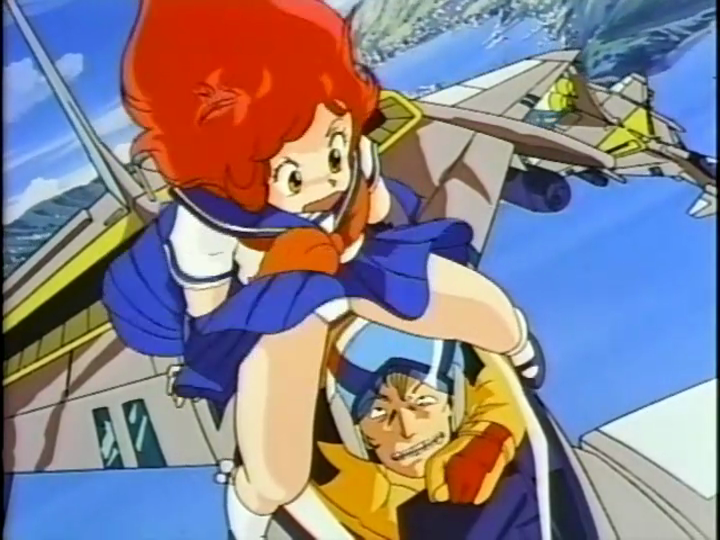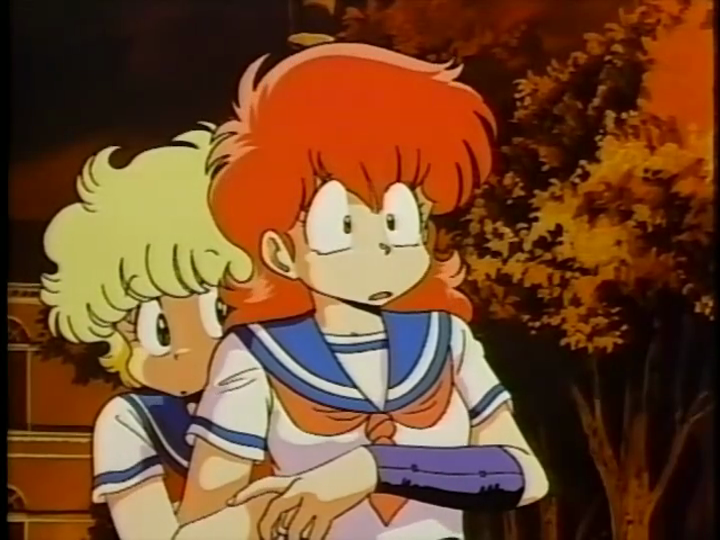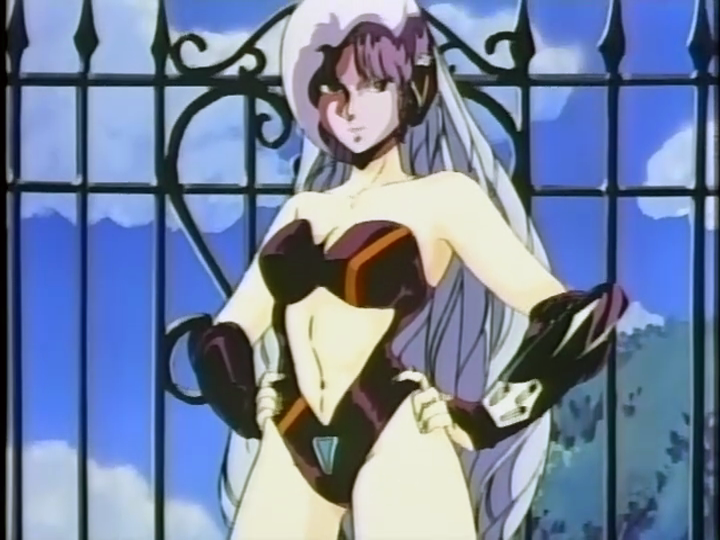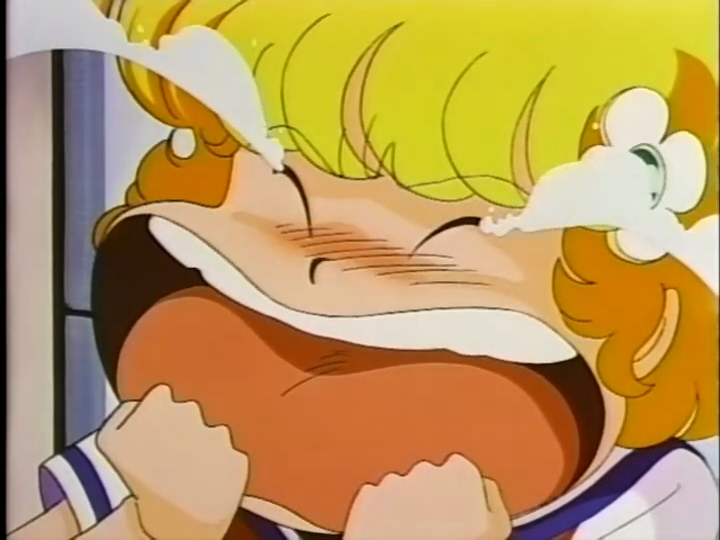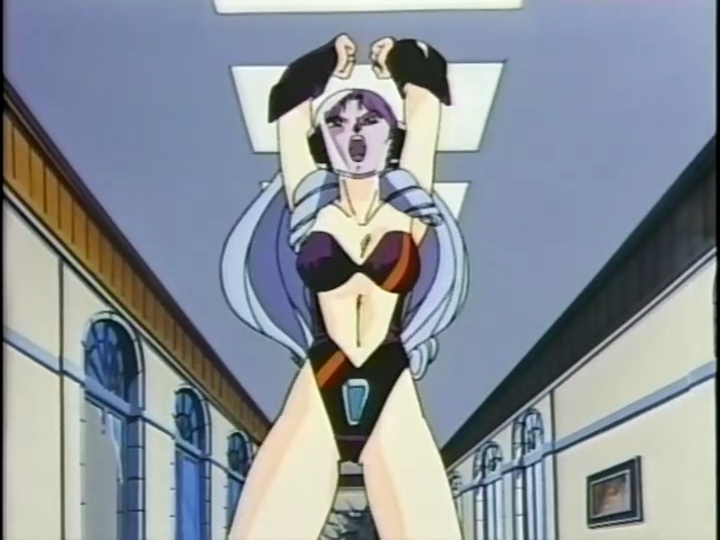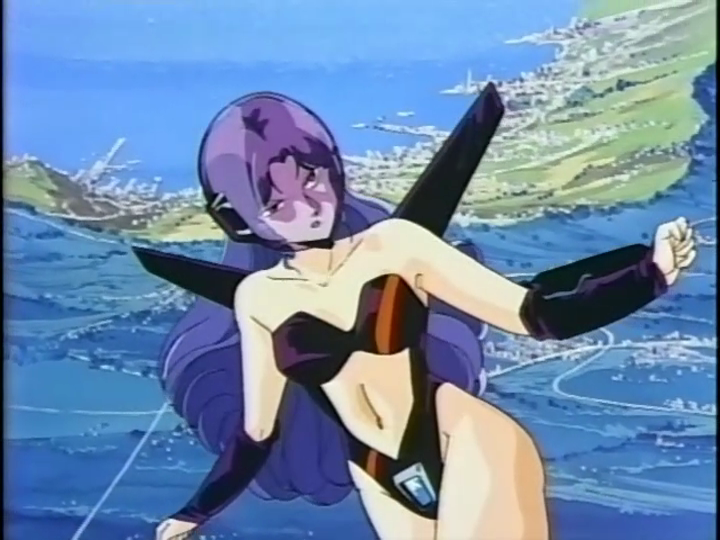Did you know that without Project A-ko, anime as we know it would not exist?
Okay, so maybe that’s a slight exaggeration. Still, Project A-ko was hugely influential on the 80s-era American anime fandom. It was one of the first non-artsy anime to be successfully imported to the States without being ripped to shreds à la Robotech; therefore, it fulfilled the role of gateway drug for many aspiring young otaku, introducing them to anime and launching their lifelong obsession with Japan that would eventually mutate into the modern monstrosity known as otaku culture. So, next time you’re glomped by a middle-aged 300-pound man dressed as Sailor Moon at a con, you can shake your fist at the sky and angrily scream, “PROJECT A-KO!”
But what’s the history behind this oh-so-important anime? Keep reading past the break to find out!
Back in the 80s, when Dirty Pair and Macross were still new, there was an infamous series of hentai OVAs known as Cream Lemon. They were were notable for their surreal “anything can happen” stories, as well as decent production values and good writing… a definite rarity for hentai. Project A-ko (named after the Jackie Chan film Project A) was originally conceived as an episode of the Cream Lemon series. However, early in the production, it was decided to drop the hentai aspect in order to make it a more mainstream action-comedy parody film. Many young, inexperienced animators were brought on board, and the entire project was helmed by Katsuhiko Nishijima. (Reportedly, Nishijima agreed to direct because he was missing some teeth, and needed money to buy new ones.) The resultant production, released in 1986, was haphazard at best, with a nigh-incomprehensible story and inconsistent animation quality. Despite this, it was so wacky and over-the-top that it managed to win the hearts of many Japanese otaku. Because of this success, the now-defunct Central Park Media brought it over to the States as one of their first VHS anime releases… and the rest is history.
The plot of Project A-ko revolves around three high-school girls living in the futuristic Graviton City: the hotheaded superstrong nigh-indestructible A-ko (which in Japanese literally means Child A), the elegant superscientist and inventor B-ko, and the annoying-as-hell crybaby loli C-ko. A-ko and C-ko are childhood friends, with A-Ko often assuming the role of protector due to her superhuman strength. In turn, C-ko assumes the role of whiny crybaby who is so annoying that everyone watching the film wants to wring her neck the second she opens her mouth. For some unfathomable reason, B-ko falls in love with C-ko and determines she needs to remove A-ko from the equation to win her crush’s heart. As a genius inventor with a trust fund that makes Bruce Wayne look impoverished, she sets about creating armies of parody giant robots to throw again A-ko… all of which fail due to either A-ko’s immense strength or some unforeseen design flaw. Driven to madness, B-ko dons her Akagiyama-23 battle bikini and fights A-ko mano-a-mano, destroying large portions of Graviton City in the process.
Meanwhile, in a seemingly unrelated plot, a massive alien starship plods through the solar system VERY SLOWLY, eventually reaching Earth about halfway into the film. The ship, commanded by an alien race who look exactly like humans (what are the odds?!), is on a mission to find an alien princess who was lost on earth as an infant. Could this wayward alien space baby have grown up to be A-ko, hence explaining her superhuman abilities? No, that would make too much sense; it turns out the princess is C-ko. I guess the aliens are masochistic enough to actually WANT this annoying little helium-voiced brat as their ruler.
The aliens kidnap C-ko, which causes A-ko and B-ko to turn their destructive abilities against the invaders. After a few dozen parody action scenes, the two girls utterly wreck the alien starship and bring C-ko back to Earth. Everybody (except the aliens) is happy, and they all live happily ever after.
At least, until the sequel.
So, is the much-hyped Project A-ko any good? Unfortunately, it has a ton of flaws. Due to poor pacing, the first act of the film is pretty boring, a problem which is exacerbated by the constant presence of the soul-crushingly annoying C-ko. It doesn’t help that most of the humor in this portion of the film falls flat, a particularly egregious example being the running box-lunch joke. The plot does become much more engaging when the action starts, but the varying animation quality serves as a distraction; some battle scenes feature wonderfully fluid animation, but others are pretty mediocre. Furthermore, the story never does make any sense; it’s really just an excuse plot for lots of superpowered fight scenes. In short, this film is an absolute mess.
That said, Project A-ko does have its strengths. The near-constant barrage of otaku in-jokes are sure to delight any fan of oldschool anime. The frentic and over-the-top action, combined with a healthy heaping of wanton destruction, easily matches anything Michael Bay has ever created. These elements do lend the film a certain wacky charm, even if it’s a slipshod effort overall. In other words, this film has the same level of appeal as an 80’s era Arnold Schwarzenegger movie like Commando; the action is insane, enjoyable and awesome, as long as you ignore everything else. Of course, instead of an Austrian bodybuilder you get B-ko’s stripperiffic battle bikini. Let’s have another screenshot of that, shall we?
Project A-ko was successful enough to launch four sequels. The first three of these continue the adventures of A-ko and company, but are widely considered to be inferior to the original by most fans. (Ironically, I actually liked the second film Plot of the Daitokuji Financial Group the most.) The final two-part film, A-ko the Versus, attempted to reboot the series as a semi-serious space-opera, but wound up looking like a mediocre ripoff of Dirty Pair. With the failure of Versus, the Project A-ko franchise died along with the decade that spawned it.
Despite it’s demise, this impact of this series continues to be felt today. It was an early influence on many of today’s most prominent otaku, including Peter Payne of J-List and Justin Sevakis of ANN. To an entire generation of children, it served as their gateway into the world of anime, launching a craze that would eventually draw us younger folks into its fold. Project A-ko might not hold up very well against more contemporary anime, but it still played an important role in our history.
Did I mention it has a battle bikini?
Sources: Mania.com, Wikipedia, Anime Nation, ANN, TV Tropes

